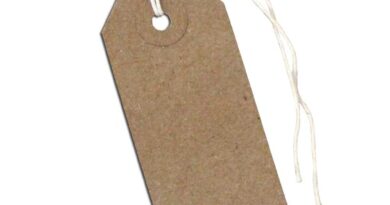5 Common Manufacturing Processes Utilized in Different Industries
Manufacturing is a vital component of any economy and plays a crucial role in creating jobs, generating income, and driving economic growth. The overall manufacturing processes refer to converting raw materials into finished goods, which is not only important for the production of everyday items such as clothing and electronics, but also for the development of new technologies and advancements in various industries. Manufacturing allows for economies of scale as well, helping to keep the cost of goods low for consumers. Furthermore, many manufacturing companies also produce exports, which can help to boost a country’s balance of trade and strengthen its economy.
Manufacturing processes describe how a business constructs or produces a product. It may involve a variety of machines, tools, and equipment with varying degrees of automation employing computers, robots, and cloud-based technologies. A company develops its own production procedures to create products, especially for its clients. Based on variables including customer demand, sales projections, assembly process, materials used, and available resources, a company determines which production method to use. For instance, you might decide to produce a good in large batches while a certain ingredient is available or on sale, or you might decide to produce it in smaller quantities to meet customer orders without incurring additional storage expenses.
In fact, when you think about manufacturing, images of interminable assembly lines, greasy overalls, and even grittier mechanics creating some metallic contraption typically come to mind. This may have been true in the early 1900s, but there are now many different manufacturing options. Even the most seasoned producer could be surprised by some manufacturing kinds. Since the industrial revolution, the industry has become significantly more diverse.
There are generally five different manufacturing processes, and the majority of companies that produce goods will come under one of them. However, one manufacturing process might still be better for your firm than another, depending on the nature of your product or line of business. This article will delve into some of the common manufacturing processes which are utilized mostly in different industries. Continue reading to learn more.
Repetitive Manufacturing
The repetitive manufacturing method is used in basic manufacturing, which produces the identical item on an assembly line. These kinds of quick manufacturing processes, which are frequently employed for make-to-stock production or in high volume, sales order-oriented environments like the automotive industry, manufacture the same or very identical items in large quantities around the clock. In these kinds of facilities, throughput is increased while manufacturing costs are reduced through the use of robots and other automated high-volume manufacturing equipment.
Moreover, the operation speeds can be adjusted or decreased to meet client expectations or requirements since it requires little setup or little changeover.
Automotive, electronics, semiconductors, and durable consumer goods are a few of the manufacturing sectors that use this type of production method. Because there is a consistent and predictable demand for the finished product from consumers, these mass production industries are perfect for repetitive manufacturing. As a single product is produced over time, the assembly line will mostly remain unchanged.
Discrete Manufacturing
Discrete manufacturing is comparable to repetitive manufacturing because it uses production lines. However, the final products that are produced through this procedure frequently differ greatly. Moreover, with discrete manufacturing, a corporation can offer a variety of product styles, sizes, or customizations, though this frequently results in a lengthier production time due to the additional setup or removal that may be required.
Additionally, this process type has a wide range of setups and frequent switchovers. This is because of elements related to how similar or distinct in design the products now in production are. The setup and tear-down will need to be changed if the items are significantly different, which will increase the production time. Additionally, it is frequently necessary to adjust the manufacturing line setup when transitioning between several product models. This is referred to as a changeover in manufacturing facilities and comes with setup costs in the form of time, labor, and resources.
For instance, in the computer sector, buyers expect mass customization in addition to the company’s ongoing quick technological advancements. The assembly line will need to be changed in order to create and assemble orders for the newest electronic components used in the creation of newer laptops and computers.
Job Shop Manufacturing
With the job shop manufacturing process, they use production spaces like workstations and workshops instead of using an assembly line. The product may be improved by each worker as it passes through their station, before it moves on to another, and eventually after it is finished. Due to its tendency to be slower and low volume production of highly specialized products, this manufacturing method is perfect for custom manufacturing.
Consider a job shop that creates custom cabinetry. At their assigned workstations, employees will be adding to the cabinet as everything is delivered to them. One can be in charge of sawing the wood, another of applying resin, another of cleaning the varnish, and yet another of putting everything together.
Remember that manufacturing in job shops is not just for low-tech products. In the aerospace and defense industries, this method is also used in the advanced manufacture of fighter jets and rockets. These products are made by skilled workers who use cutting-edge manufacturing processes and put a big emphasis on quality control to ensure a high-quality build.
If you are a manufacturer who handles custom products or works on a project-by-project basis, it is a good idea to select these manufacturing kinds.
Batch Process Manufacturing
Batch process manufacturing is comparable to discrete and job shop manufacturing processes, based on consumer demand or the accessibility of ingredients and raw resources. If the batch from a single manufacturing run is sufficient to meet client needs, you stop production, clean the machinery, and pick up again when you require another batch. Actually, batch process manufacturing is frequently used in the manufacture of foods, newspapers, books, and medications.
Depending on consumer demand, one batch can be sufficient to satisfy that demand. A manufacturer cleans the machinery after a batch manufacturing run to get it ready for the following batch. By their very nature, batch processes are ongoing.
Additionally, batch processes are possible when raw materials or ingredients are not produced to strict standards. The product ingredients are comparable to the continuous manufacturing process, and the production method is more varied.
A good illustration of this is a sauce manufacturer. They might be able to make a variety of sauces—BBQ, ketchup, mayonnaise, for example—but a customer’s order might only call for one of them. Mayonnaise and other sauces then will not be produced while ketchup is being made for a client in a precise quantity. And instead, the equipment will be cleaned and left until it is time to make another batch of that sauce.
Continuous Process Manufacturing
Continuous process manufacturing is quite similar to repetitive production, given that it operates around-the-clock, produces the same or similar items on a regular basis, and produces greater order quantities. The main distinction here is that, rather than using solid-state components, raw materials such as gasses, liquids, powders, and slurries are employed. Granule materials, however, can be the end output in industries like mining. Unless the disciplines used to generate a finished product or a production method are more diversified, product designs are comparable.
With the exception of the different raw materials, it functions virtually exactly the same as repeated production. A pharmaceutical business that manufactures painkillers in greater numbers might serve as an illustration of this in action.
Key Takeaway
The industry and the kind of product that businesses want to produce will determine how firms conduct their manufacturing processes. If you wish to produce a variety of items, a hybrid manufacturing method that incorporates several manufacturing techniques might occasionally be helpful. Additionally, it is crucial to invest in the appropriate production technology after selecting the best manufacturing method in order to guarantee process control.



